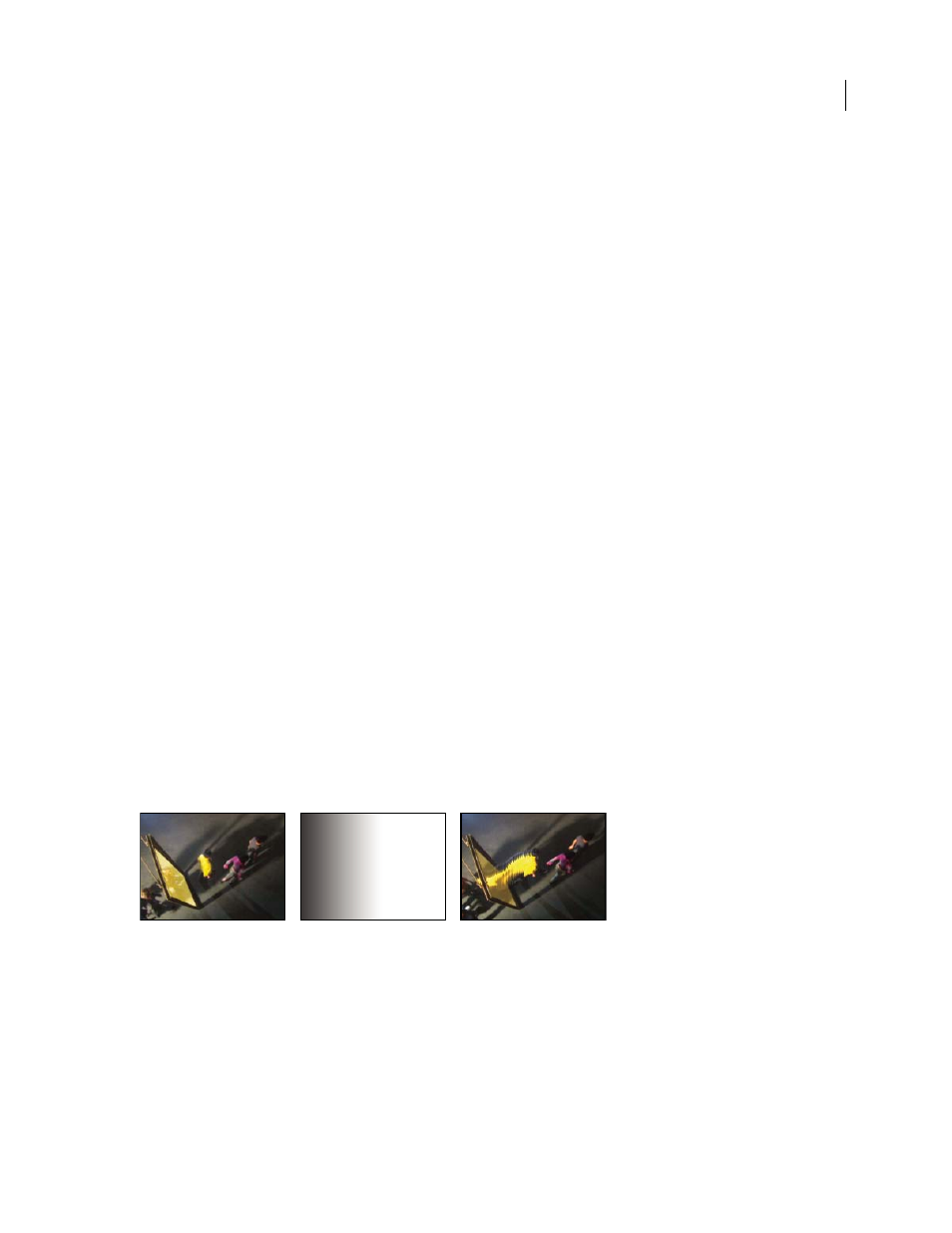Time displacement effect – Adobe After Effects CS3 User Manual
Page 538

AFTER EFFECTS CS3
User Guide
533
Time Offset
The relative time in the comparison layer, in seconds, where the layers are compared. If this control is
set to 0.00, the comparison occurs at the current time. To compare the effect layer to a point 3 seconds into the
comparison layer, for example, change the Time Offset value to 3. When you select the underlined offset value, you
can enter the specific frame offset value in the format frames/frame rate. After Effects automatically calculates the
value. For example, enter 3/30 to offset three frames forward in a 30-fps composition. The calculated value is 0.1, or
10% of the total time.
Contrast
Adjusts the comparison result. This control can be especially helpful in fine-tuning color corrections.
Absolute Difference
Displays the result of the comparison as an absolute value. Any area of the comparison layer
that isn’t different from the effect layer is represented by black, and any amount of difference is represented as
brighter than black. If this option is unselected, compared areas with no difference are represented as gray.
Alpha Channel
Specifies how the alpha channel is calculated.
•
Original
Uses the effect layer’s alpha channel.
•
Target
Uses the target layer’s alpha channel.
•
Blend
Blends the effect and target layers’ alpha channels.
•
Max
Uses the most opaque of the original source and Target layers’ alpha channels.
•
Full On
Sets the alpha channel to completely opaque.
•
Lightness Of Result
Uses the lightness of the RGB difference as alpha.
•
Max Of Result
Uses the highest values of the RGB difference as alpha.
•
Alpha Difference
Calculates differences in the effect and target layers’ alpha channels the same way RGB
difference is calculated.
•
Alpha Difference Only
Calculates only the differences in the alpha channels. RGB is set to white.
Time Displacement effect
The Time Displacement effect distorts the image by shifting pixels across time, producing a wide variety of effects.
For example, the traditional slit-scan technique, which captures different stages of a moving image across time, can
be simulated using the Time Displacement effect.
This effect works with 8-bpc and 16-bpc color.
Time Displacement effect
Like the Displacement Map effect, the Time Displacement effect uses a displacement map, but it bases the movement
of pixels in the layer on luminance values in the map. Pixels in the layer that correspond to bright areas in the
displacement map are replaced by pixels in the same position but at a specified number of seconds forward in time.
Likewise, pixels in the layer that correspond to dark areas in the displacement map are replaced by pixels at a
specified number of seconds backward in time. You can use any layer as a displacement map, though using a
grayscale image lets you more easily see brightness levels and predict how pixels will be displaced.
